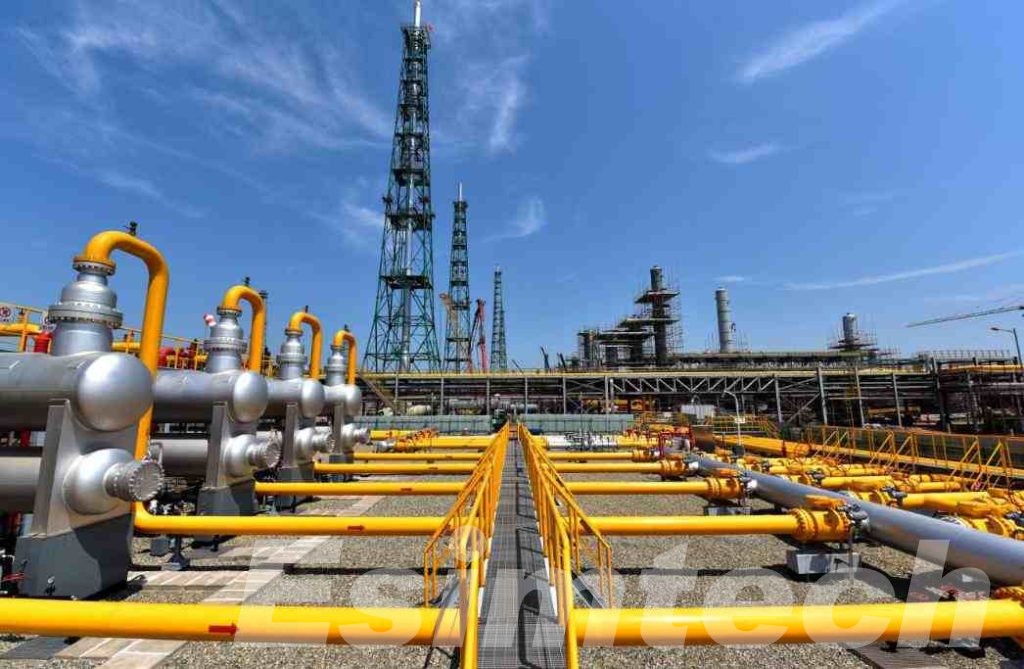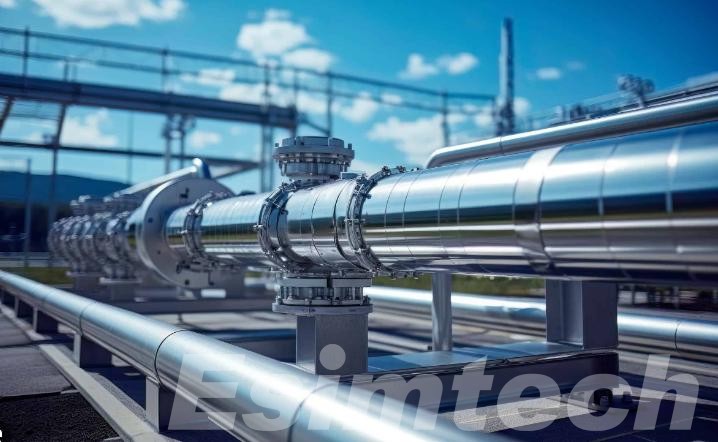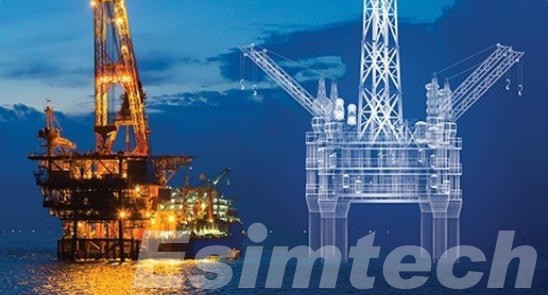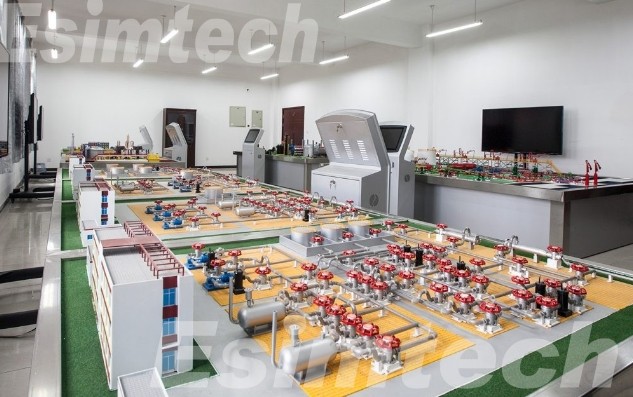How to Storage and Transport Oil and Gas
Safe and economic storage and transportation of oil and gas is the backbone of the global energy market. From the production location to the refinery and end-user, every operation in the supply chain must be regulated with care to prevent accidents, harm to the environment, and operational delay. Advances in technology, regulatory policies, and innovative logistics solutions have made these inflammable and valuable resources handled economically and safely.
It is critical that operators, engineers, and decision-makers understand the fundamentals of oil and gas storage and transportation. It helps in decreasing risks, lowering costs, and meeting international standards while maintaining the reliability of energy supply.
What is Oil and Gas Storage and Transportation?

Oil and gas transportation and storage refer to the systematic movement of petroleum products and natural gas from production all the way to processing facilities, distribution terminals, and consumers. While storage is about product safe storage until consumption, transportation ensures timely and efficient delivery in pipelines, tankers, trains, or trucks.
These operations are crucial in maintaining the quality and integrity of the products, as well as preventing accidents or damaging the environment. Efficient management of transport and storage reduces operational risks, maintains regulatory compliance, and overall supply chain efficiency.
Key elements of oil and gas storage and transportation are:
- Facilities: Special types of tanks, reservoirs, pipelines, terminals, and motor vehicles to move hydrocarbons.
- Monitoring and Safety: Continuous monitoring of pressure, temperature, and leaks to prevent harm and meet safety standards.
- Logistics Management: Timed shipments and storage area coordination to meet demand without surpluses and delays.
- Regulatory Compliance: Adherence to host country and international regulations, e.g., environmental protection and safety standards.
By understanding the extent and most important components of oil and gas transportation and storage, operators are able to optimize operations, reduce costs, and provide a secure and efficient supply chain from end-use to production.
Key Methods of Oil and Gas Transportation
Effective oil and gas transportation is essential in transporting energy products effectively and safely from refineries, storage tanks, production facilities, and end-users. With regard to distance, quantity, and geographical restrictions, different means of transportation are utilized, each of which has its strengths and weaknesses.
1. Pipeline Transportation

Pipelines are the most cost-effective and reliable medium to move crude oil, refined products, and natural gas over long distances. Pipelines give a constant and cost-effective supply, reducing the need for recurrent handling. Pipelines, however, require initial high capital costs, accurate route planning, and continuous monitoring to prevent leak or corrosion.
2. Sea Transport (Tankers and Barges)

Barges and ships are used to transport oil and gas across seas and large inland waterways. With strengths of high capacity and flexible routing, suitable for international commerce and offshore production, weaknesses include weather dependency, maritime law, and potential for spills.
3. Road and Rail Transportation

Trucks and trains provide flexible, short-to-medium range transport, especially for pipeline-scarce locations. They allow for rapid deployment and smaller shipment sizes. Truck and rail transportation, however, involves higher per-unit cost, traffic risks, and strict safety measures due to the flammability of the product.
| Mode | Advantages | Challenges |
| Pipeline | Continuous, low operational cost | High initial investment, leak monitoring |
| Tankers/Barges | Large volume, flexible routes | Weather-dependent, maritime risks |
| Trucks/Rail | Flexible, fast deployment | Higher per-unit cost, accident risk |
By selecting the appropriate method and implementing monitoring and safety protocols, operators can ensure that oil and gas transportation is reliable, cost-efficient, and compliant with regulatory standards.
Best Practices for Oil and Gas Storage
Proper storage is the cornerstone of safe and consistent oil and gas storage and transportation. Well-regulated storage not only ensures product quality but also minimizes the risks related to leakage, fire, and environmental impact. Operators must adopt a combination of operational practices, monitoring devices, and engineering controls for reliability and compliance.
Some of the most significant best practices are:
- Choosing the Appropriate Storage Form: Accurate choice of reservoirs or tanks—pressurized, underground, or aboveground—that are appropriate to the nature of the hydrocarbons stored.
- Control of Temperature and Pressure: Regulation of stable ambient conditions to prevent vaporization, condensation, or pressure increase that could compromise safety.
- Leakage Prevention and Containment: Use of secondary containment systems, corrosion-resistant materials, and regular checks for early leak detection and repair.
- Regular Maintenance and Monitoring: Use of sensors and automated monitoring to track pressure, temperature, and product level, with periodic maintenance to preserve equipment integrity.
- Safety and Compliance with Regulations: Adherence to local, national, and international regulations, such as API and ISO standards, and adequate emergency response protocols.
- Inventory and Logistics Management: Coordination of storage capacity with transportation schedules to achieve maximum supply chain effectiveness and minimize bottlenecks.
By modifying their best practices, companies are able to achieve maximum efficiency of operations, reduce risks, and provide a safe and stable supply chain. A good storage strategy is not a technical requirement—it is a key element in successful oil and gas storage and transport from production to consumption.
Innovations and Technologies in Oil and Gas Transportation
Technology is transforming oil and gas transportation, rendering it more secure, efficient, and dependable to transport hydrocarbons. By integrating modern monitoring, automation, and predictive functionality, operators can optimize operations, minimize risks, and decrease operating expense.
Some of the key innovations include:
- IoT Sensors and SCADA Systems: Pipeline, tank, and terminal monitoring in real time allows for the early detection of leaks, pressure fluctuations, and equipment abnormalities, significantly improving operational safety.
- Automation and Remote Control: Automatic valves and pumps and flow systems reduce manual intervention, enhance accuracy, and facilitate rapid response to emergencies.
- Advanced Materials and Anti-Corrosion Technologies: New-generation coatings, high-strength alloys, and composite materials contribute to higher strength and longer life for pipelines, tanks, and vessels.
- Predictive Analytics and AI: Data-driven analytical capability allows forecasting of possible failures, optimization of maintenance intervals, and prevention of planned shutdowns.
- Digital Twins and Simulation Tools: Transportation network virtual replicas allow operators to model scenarios, predict risks, and map best routes before actual deployment.

By applying these technologies, companies are able to enhance the safety, transparency, and efficiency of oil and gas transportation. Apart from operational benefits, these technologies enable regulatory compliance, reduce the environmental impact, and improve decision-making in logistics chains.
Oil and Gas Gathering and Transportation Simulator
A gathering and transport simulator is a high-tech computer software that simulates the complex process of transporting and storing oil and gas. It provides operators, engineers, and decision-makers with a safe and simulated space through which they can view and improve hydrocarbon transportation from production to storage and end-consumers.
Through simulation technology, companies can plan operations, rehearse personnel, and analyze for possible threats without compromising equipment or personnel exposure to actual threats. Simulators replicate pipeline networks, tank storage facilities, tanker routes, road or rail logistics, and allow teams to simulate scenario testing, establish efficiency, and identify bottlenecks before adopting actual operations.

Chief benefits of simulator use are:
- Operational Planning: Plan transportation routes, storage area allocation, and scheduling to optimize efficiency and reduce delays.
- Risk Assessment: Pinpoint possible risks such as leaks, pressure changes, or bottlenecks well in advance before they occur in actual operations.
- Training and Preparedness: Provide realistic, hands-on operator and emergency response team training with improved safety awareness and coordination.
- Cost and Resource Optimization: Minimize trial-and-error on-site modifications, minimizing time, avoiding waste, and lowering operational costs.
Through the inclusion of a gathering and transportation simulator in their operations, companies enhance the reliability, safety, and efficiency of oil and gas carriage, and support compliance and operational excellence. It transforms challenging, high-risk operations into predictable, manageable, and optimized processes.
Final
Secure and efficient transport and storage of oil and gas require a synergy of engineering know-how, technology uptake, and strict adherence to regulations and safety standards. From tankers and pipes to advanced simulators, every technique and device is essential in ensuring reliability, mitigating risks, and minimizing costs. Companies that embrace best practice, advanced technologies, and future planning not only register operations success but also ensure responsible and efficient supply of energy to the world.
